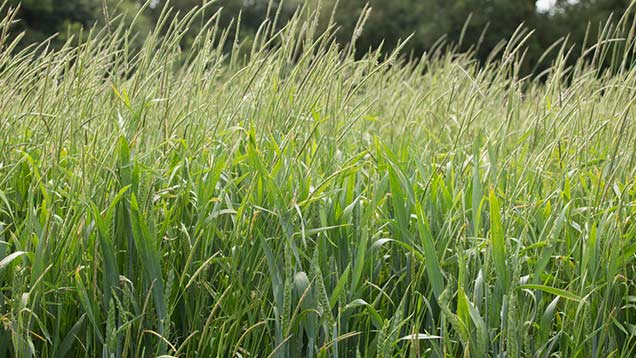Soil sterilant could help control blackgrass
 © Tim Scrivener
© Tim Scrivener A soil sterilant used in horticultural crops is showing early promise as an alternative method of blackgrass control to rid the upper soil profile of weed seeds prior to a cereal crop being drilled.
More than 90% blackgrass control is being achieved in both glasshouse and small-plot field trials from the use of dazomet, which is effective against both susceptible and resistant weed populations.
The work is being conducted by distribution and agronomy group ProCam, led by technical director Tudor Dawkins and agrochemical company Certis, in conjunction with the University of Nottingham.
“These first results have been very encouraging. There has been a substantial reduction in the amount of blackgrass that emerges where dazomet is applied and incorporated to a depth of 15cm,” he says.
What is dazomet?
Dazomet is marketed by Certis as Basamid in the UK. It is a granular soil sterilant for field and glasshouse soils. It is approved for outdoor and protected use and controls a range of soil pests, nematodes, fungi and weeds.
Basamid can only be used once in every three years on the same ground, so growers have to plan its use on a whole-farm basis. It can be applied by either grower or contractor using appropriate machinery.
While there is no soil carryover or residues, there is a six-week interval from application to planting, depending on soil temperature and the rate used.
See also: New herbicide option for controlling resistant blackgrass
Different rates have been assessed, as well as various incorporation depths, to see whether there is potential for the sterilant to be used ahead of combinable crops in minimum-tillage regimes, or as part of a blackgrass control strategy.
“We have also been investigating its use in a range of soil types and the best way of sealing the soil once dazomet has been applied,” he says.
Looking ahead, Dr Dawkins reports his group will be trialling the use of the product – which is sold as Basamid in the UK – in bigger field blocks this year, with more work being done on rates, applications and incorporation techniques.
“This is still in development, but it is very intriguing and the technology clearly works. Further evaluation of its efficacy, along with techniques that will allow application, incorporation and sealing to take place in one pass, is taking place this year,” he adds.
Warm, moist soils are required for the product to work well. “In horticultural use, there has to be a six-week interval before you can plant the next crop. However, by using lower rates, we believe that could be reduced to about three weeks depending on the rate used and soil temperature,” says Dr Dawkins.
Although polythene cover is widely used in horticulture to seal the soil after application, it may be possible to make use of rolling in arable fields.
“We have done a comparison of polythene and rolling, which has shown rolling can be just as effective,” he says.
The group has investigated rates considerably below those on the current label, with 100-200kg/ha being assessed.
“It is not just blackgrass seeds that are killed. We have seen effects on species such as charlock and cleavers too,” he adds.
Dr Dawkins admits that at current pricing levels, dazomet is not economic, but it works and it could be used on a rotational basis, or just on the worst areas, which would keep costs down, he says.

